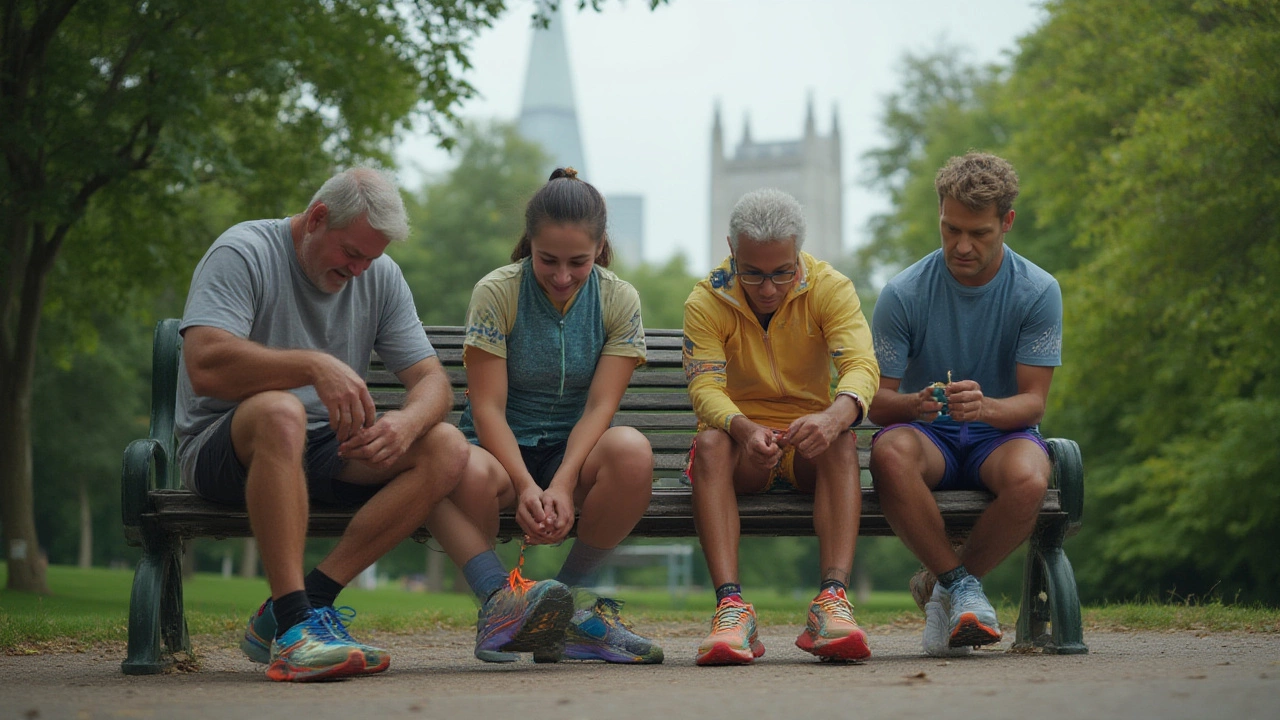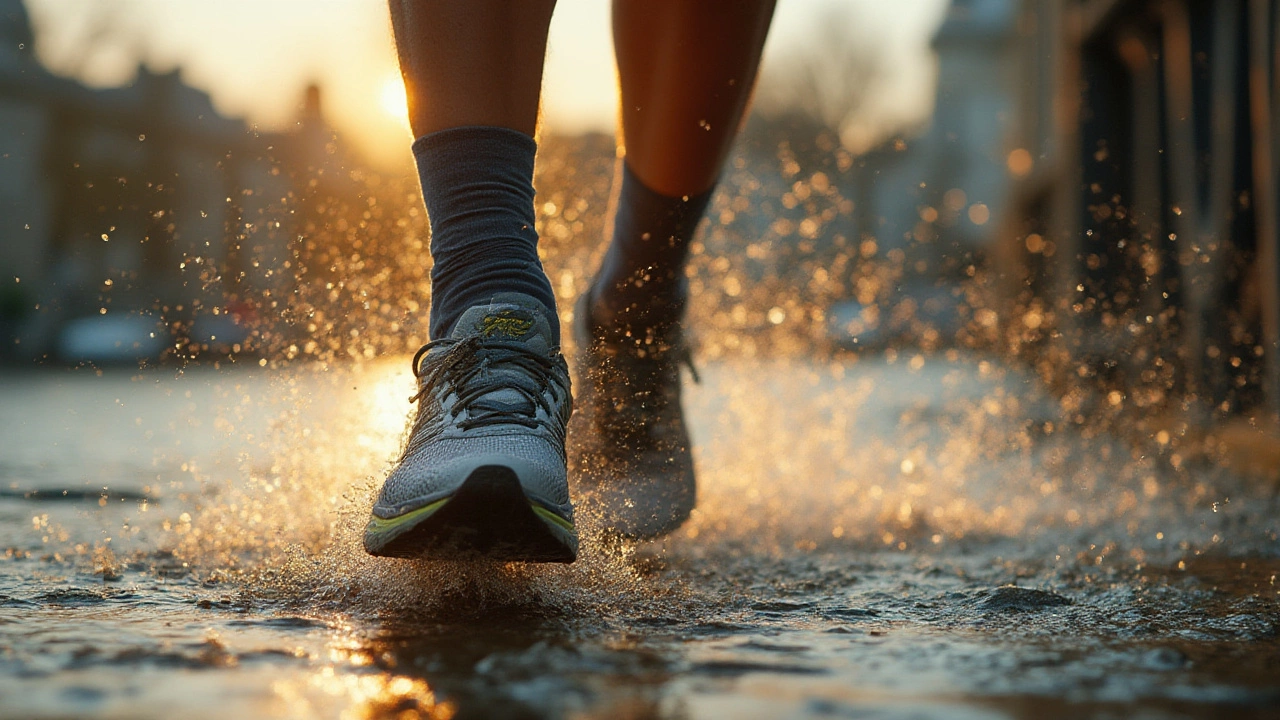Are Hoka Running Shoes Really Good? A Deep Dive for Runners
 Jul, 17 2025
Jul, 17 2025
You see them everywhere—on the city streets, whizzing by in Sydney parks, and plastered all over Instagram. Thick-soled, bold-colored Hokas aren’t just another run-of-the-mill sneaker fad. They've stormed past the old guard of running shoe brands to become a staple for both hobby joggers and elite marathoners. But do the looks and chatter match the reality? Can strapping on a pair of Hokas actually help you run farther, or is it all hype wrapped in a chunky slab of foam?
Why Hoka Shoes Broke the Mold
Back in 2009, two French trail runners, Jean-Luc Diard and Nicolas Mermoud, were frustrated. Shoes just weren’t cutting it on mountain descents; their bodies took a beating, and they craved something that could soften the impact. So they did something radical. They designed shoes with massive midsoles, dishing out double the foam most brands considered normal. They called their brand Hoka One One—pronounced “Ho-kah Oh-nay Oh-nay,” which means "fly over the earth" in Maori. Talk about ambitious. At first, people thought Hokas looked bizarre. Most running shoes at the time chased the minimalist trend—thin, flexible, and supposedly closer to barefoot running. Hokas went the other direction: all-caps MAXIMALISM. But runners noticed something. The huge cushion offered real benefits. Long runs felt less punishing. Recovery improved. Knees and hips didn’t ache as much. It was a gamble that worked. Now, more than a decade later, Hokas sell out routinely, even among runners who once laughed at their clunky look.
Still, there’s more than just extra foam. Hokas are engineered with meta-rocker geometry. That means the sole curves upward at the toe and heel, sort of like a rocking chair for your foot. The idea is to make your stride feel smoother and reduce the energy you spend toeing off with every step. Plus, many Hoka models come in multiple widths, a rare blessing for folks with wide feet or bunions. There’s no denying Hoka disrupted the status quo faster than most legacy brands ever could.
How Hokas Feel on the Run—Truth or Hype?
Alright, let’s get personal—how do they actually feel to run in? Cushiony is the obvious word, but not in the sinky, marshmallow way you might expect. Take the Clifton 9 or Bondi 8 for instance: both deliver heaps of shock absorption without feeling sluggish. Runners with knee or joint pain often love this, and many podiatrists in Sydney back up these claims, reporting fewer stress reactions and IT band flare-ups among patients who switched to Hokas. You might think the added bulk slows you down, yet regulars at Sydney Running Club swear by the lightness of modern Hoka foams. The midsole doesn’t weigh you down, thanks to EVA blends and clever engineering. In fact, elite ultramarathoners like Jim Walmsley won massive events—think Western States 100—wearing Hoka, setting course records.
But not every runner vibes with Hokas. Some say the stack height makes their stride unstable, especially if they’re prone to twisting an ankle. Hokas can also feel less responsive on sprints, which could bother speed demons chasing PBs over 5 or 10 kilometers. Another thing: the fit is roomy for many, but not all. People with super-narrow feet sometimes find their foot slides around in Hokas. Breaking them in can take a few runs. One tip? Don’t rush. Try your Hoka on at the end of the day when feet are swollen to avoid buying too snug a size. And if you’re used to minimal footwear, transition gradually. All that cushion changes how your muscles work.

Picking the Right Hoka Model For You
If Hokas are your next experiment, picking the right model matters. You don’t want the plushest Bondi if you’re only lacing up for short bursts along Bondi Beach, just like you probably don’t need the carbon-plated Rocket X if you’re a casual jogger. Here’s a quick cheat sheet for you:
- Hoka Clifton 9: The classic daily trainer—super lightweight, balanced cushion, handles everything from slow slogs to tempo runs. Great for people who want a one-shoe-for-everything option.
- Hoka Bondi 8: The max-cushion king. If you struggle with joint pain or run long distances on pavement, this is your foot’s best friend. People with plantar fasciitis rave about it.
- Hoka Arahi 7: Stability shoe for overpronators. It’s like a Clifton with bonus support, perfect for those whose ankles wobble outward.
- Hoka Mach 6: The speedster. Lighter and a bit firmer, it’s perfect for tempo days or fartlek sessions. Not quite as pillowy, but responsive.
- Hoka Speedgoat 5: Trail beast. Tackles mud, rocks, and slippery grass without flinching. Australian trail runners love the grip on Blue Mountains tracks.
Worried about cost? Hoka shoes aren’t cheap, pricing out at $220 to $260 AUD most places in Australia. But look after them, and they’ll usually outlast the average runner’s rotation (600-800 kilometers a pair isn’t crazy). Still, the toe box varies between models, so always try before you buy. And look for the latest versions—older Clifton and Bondi models ran narrower, which bugged a lot of folks with broader feet. Some running stores in Sydney will even let you test run them outside before swiping your card.
Expert Tips: Getting the Most Out of Your Hokas
Want to make the most out of those chunky kicks? First rule: rotate your Hokas with at least one other pair of running shoes. Studies at the University of South Australia found that swapping shoes helps reduce injury rates by keeping strain off one particular set of muscles and tendons. If you use Hokas every day, you might notice their soft ride feels a touch less springy after about 10 weeks. That’s a normal “compression set”—the foam gets a little denser over time. Rotate in a firmer shoe once or twice a week to keep your legs guessing.
You’ll also want to keep your Hokas clean, especially if you run on the sand at Bondi. Rinse off salt and mud with cool water, then let them air dry. Avoid the dryer or heater—EVA midsoles can warp. If you’re running ultra distances or logging serious weekly kilometers, invest in a second pair. Alternating lets the midsole rebound between runs, meaning your shoes give you a more consistent ride. Here’s a quick checklist:
- Don’t wear your running Hokas casually. Everyday hard pavement will wear the sole down fast.
- Store them in a cool, dry spot—don’t leave them in the hot boot of your car, especially during Sydney summers.
- If the sole treads wear down or the cushion feels lopsided underfoot, it’s time for a replacement—even if the upper still looks good.
- Use the Hoka size chart, and when in doubt, go up a half size if your toes touch the front. Your running shoes should never feel tight.
Maybe the best tip? Trust how your body feels. If your joints are happy and you’re actually looking forward to the run, you’ve probably found your match. Loads of Aussie podiatrists and physios recommend Hokas to runners rehabbing from injury, especially for conditions like shin splints or Achilles pain. The brand’s commitment to plush cushioning pays off for recovery days too. Next time you spot someone floating up and down Parkrun in a pair of neon Hokas, remember: it’s not just fashion. For many, it's actual comfort and performance—no matter how wild those soles look.